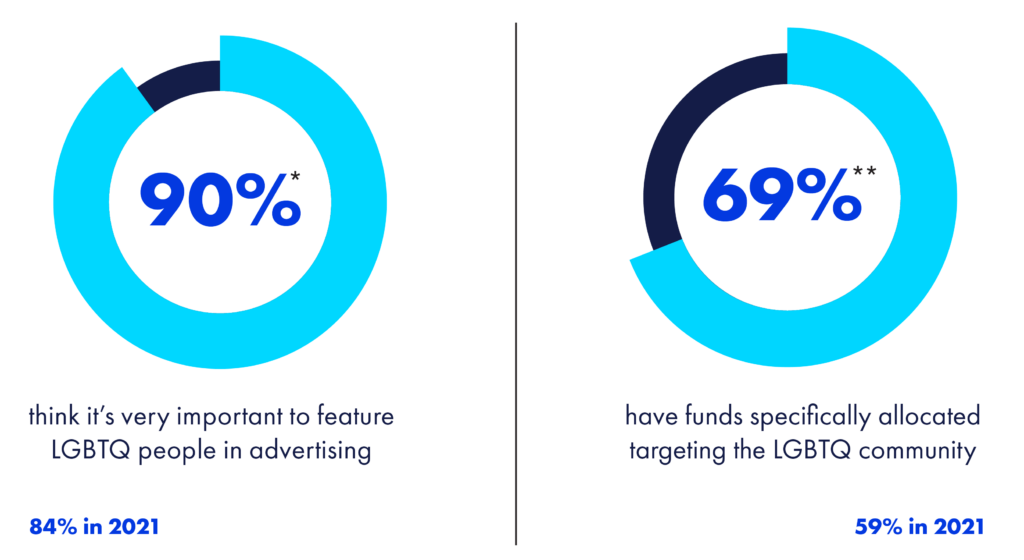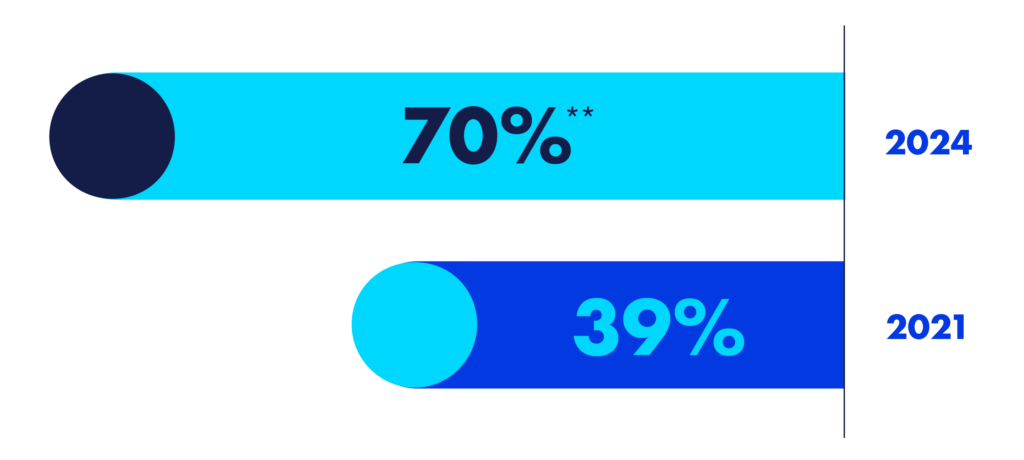Importance of Featuring LGBTQ People and Budgets to Target us Have Increased Since 2021
90% of advertisers and agencies agree it’s very important to feature LGBTQ people in advertising, up from 84% in 2021. And nearly 70% of advertisers and agencies have funds specifically allocated to target our community, compared to 59% in 2021. With 7.6% of U.S. adults identifying as LGBTQ in the U.S., 22% of Gen Z adults, and 10% of Millennials, featuring us in advertising and legitimizing LGBTQ consumers is a business growth strategy. The increase in the importance of featuring our community is driven by Advertisers over Agencies (+16% increase among advertisers).
The industry is placing more importance on featuring our community, and allocating more funds to target us

*statistically significant at 90% confidence **statistically significant at 95% confidence
Compared to 2021, there has been a massive increase in the industry believing that the LGBTQ community is very important to their business. In 2021, 39% of the industry thought this, and 70% believed this in 2023. This means there has been a +79% increase in the industry recognizing that the LGBTQ community is very important to their business. With a purchasing power of $1.4 Trillion in the U.S. and younger generations, specifically Gen Z, being far more likely to be part of the LGBTQ community, the advertising industry sees our community’s critical value to their business.
There has been huge growth in the industry recognizing the importance of the LGBTQ community to their business

The LGBTQ community is very important to my/my client’s business
**statistically significant at 95% confidence













